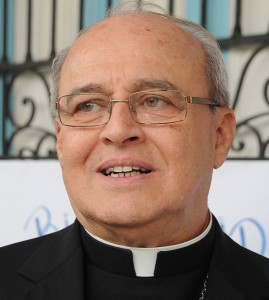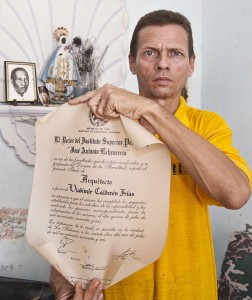Cuba’s Catholic Church and the Dissidents: A Divorce in the Making?

HAVANA TIMES — Cuban Cardinal Jaime Ortega provoked the ire of anti-Castro groups inside and outside Cuba, following a conference at Harvard University, where he criticized dissidents who occupied churches before the Pope’s arrival this past March.
In an editorial published on the website of Radio and TV Marti — which belongs to the US government — the head of the Cuban Catholic Church was described as a “lackey” and accused of lacking the understanding and compassion to understand human reality.
According to reports from Miami, the cardinal attacked the dissidents, defamed the late bishop of the exile community (Monsignor Roman), and is engaged in a “political conspiracy” with Raul Castro. Meanwhile, domestic opponents claim that the bishop and other “church officials are sympathetic to the government.”
Orlando Marquez, the press spokesperson for the archdiocese’s in Cuba, said that what was stated in the address by Cardinal Jaime Ortega was taken out of context, and he immediately handed us a transcript of the speech so that we could understand the true meaning and sense of his words.
THE CRITICISMS OF THE CARDINAL
Shortly before the arrival of the Pope to Cuba in March of this year, the “Partido Republicano” (a Cuban group that was virtually unknown until then) took over seven churches across the island as they called for greater political freedoms and also asked to be received by Pope Benedict XVI.
All of them were subsequently cleared from the premises, though in Havana this required law enforcement authorities who intervened at the request of Cardinal Ortega.
The religious leader described these people as “ex-criminals,” stating that one of them had been arrested for indecent exposure and another one was an ex-con who had lived in the US and was later deported to Cuba.
Speaking at Harvard, the prelate said the occupation of the temples “was organized by a group from Miami” and that the dissidents had received orders over “latest-technology cellphones.” From the province of Pinar del Rio, opposition sources confirmed to Ortega that “they asked us to occupy the cathedral.”
Nonetheless, he finally qualified his assessment by arguing that “there are some groups that do a lot of damage to any opposition or dissent movement, any number of which have been created, while these groups are often only seeking to leave the country, obtain refugee status, etc…”
THE DISSIDENTS RESPONSE

We talked to Vladimir Calderon, the leader of the dissident group that led the occupation in Havana. He assured us that none of them have criminal records except for Carlos Lopez, who spent six years in prison in the US and served time in Cuba for stealing a motor in an attempt to leave the country illegally.
Calderon notes that nor is it true that they have low cultural and educational levels, as was alleged by the Cardinal at Harvard. He showed us his degree in architecture and said that the average schooling among the occupants was 12th grade, though he acknowledged that today none of them have jobs.
Calderon believes that “the Cardinal may in fact be a sympathizer of the regime’s policies and of some of its reforms, which Ortega himself called patient and constructive. It’s not the church that’s taking this stance, but some of its officials. I respect everyone, but I don’t think they should be so accomodating.”
The opposition leader recalled that “during the occupation of the church, Monsignor Ramon Suarez Porcari, chancellor of the Havana Archdiocese, told us that the temples couldn’t be used as political trenches, and that the Pope didn’t come to talk politics. However, that same pontiff had two meetings with Raul and one with Fidel.”
“THE OTHER PARTY”
According to Catholic dissident Osvaldo Paya, in the upper echelons of the Catholic Church “there is a politicization of certain sectors or people following the line of the Cardinal.” He added, “It’s a doctrine establishing that Raul Castro is the only one who can promote change and that the opposition doesn’t exist.”

Paya, the leader of the Movimiento Cristiano Liberacion, maintains that this sector of the church “is behaving like ‘the other party,’ and just like the Communist Party, it’s acting without transparency and being exclusionary.
The image that we’re getting is that of a church that wants to be a leader that’s substituting itself for the opposition.”
For decades, dissents found a political ally in the Catholic Church. Opposition figure Dagoberto Valdes directed Vitral (the country’s leading Catholic magazine), and bishops openly criticized the government in many sermons. However, since the accession of Raul Castro, relations have improved substantially.
The president and cardinal initiated a process of dialogue that minimized criticism of the clergy and created a more open society for the church. Later Ortega requested Castro release those political prisoners who were ill, and the response was to release all prisoners of conscience and an additional 3,000 common prisoners.
Now the church seems to be heading to become a bridge between the socialist government and the Catholic bourgeoisie in exile, getting them to work together in promoting reforms that will allow investment in Cuba. Several meetings have already taken place, and though these still only have an “academic” character, change is advancing rapidly.
—–
(*) A Havana Times translation of the original posted by Cartasdesdecuba.com.






I like receiving the Havana Times.